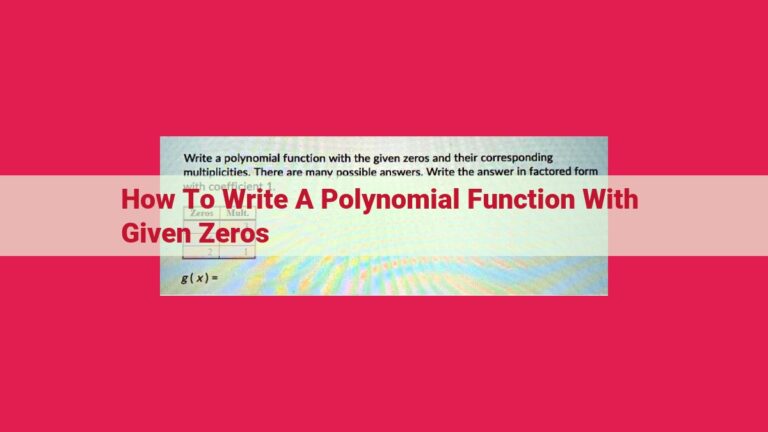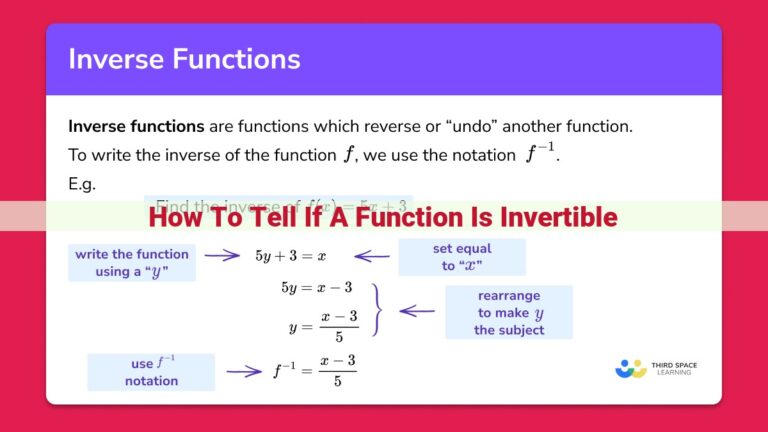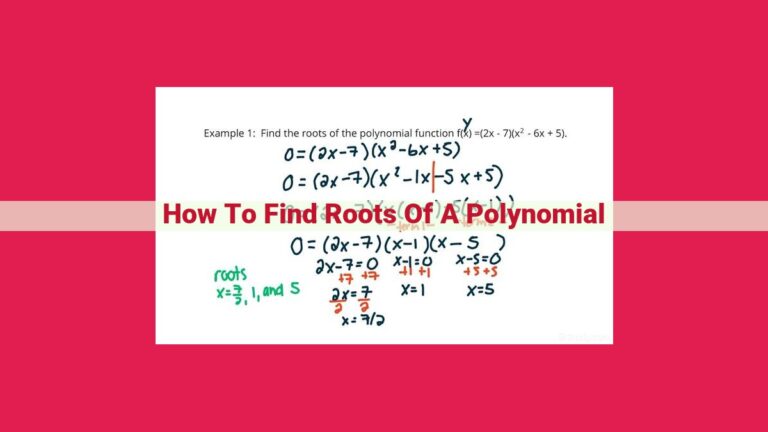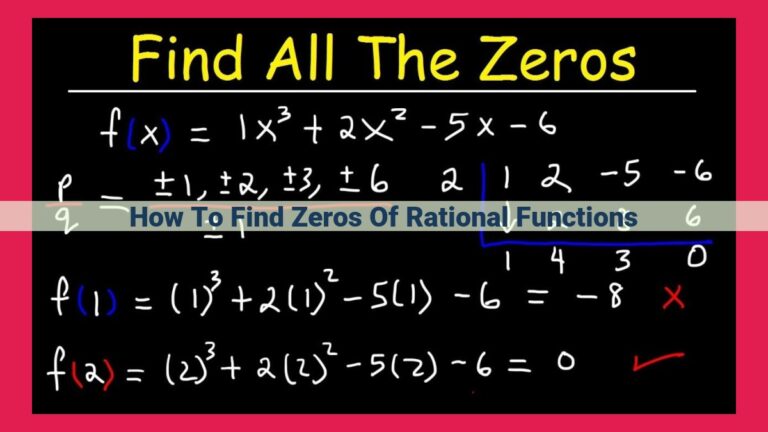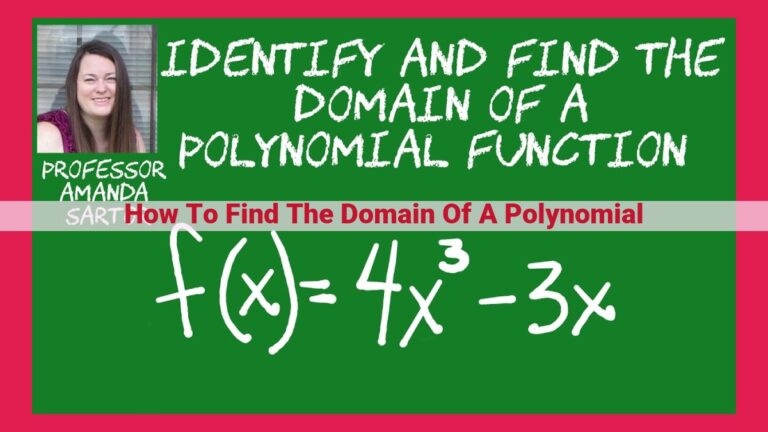Domain Of Function Compositions: Finding The Intersecting Input Sets
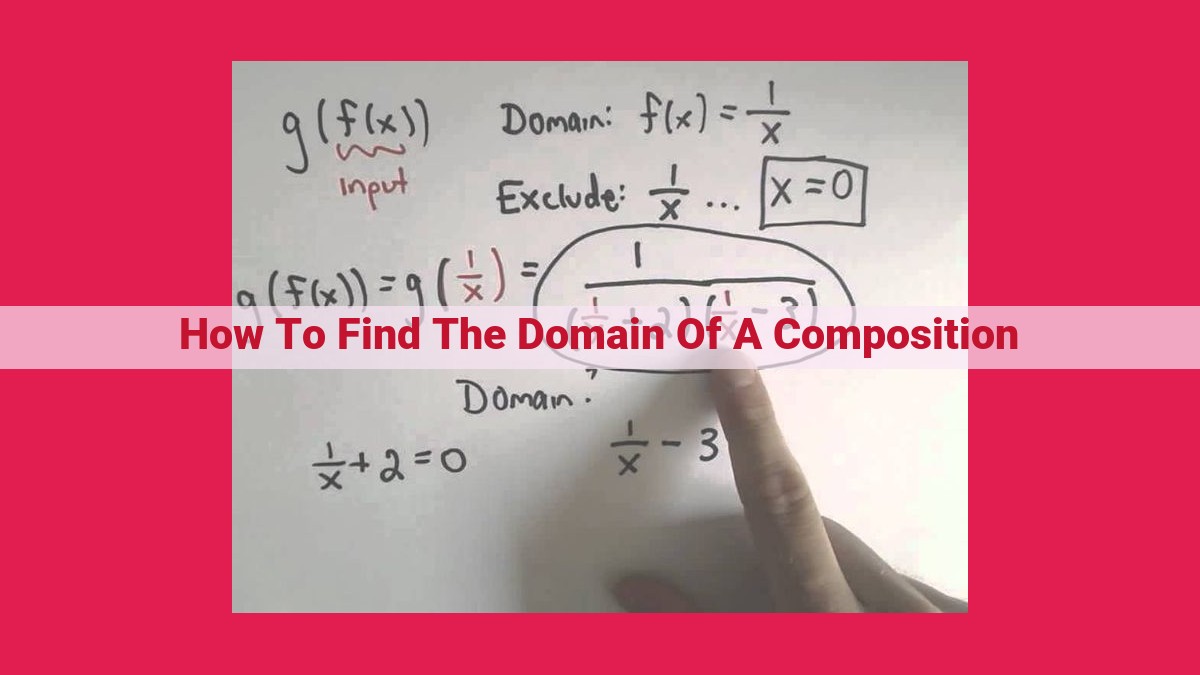
To find the domain of a composition of functions, first understand the domain of a function as the set of possible input values. When composing functions (f∘g(x)), the domain of the composition is the intersection of the domains of the individual functions. This ensures that both functions are defined at the same input values. For example, if f(x) has the domain [0, 5] and g(x) has the domain [-3, 7], the domain of f∘g(x) is [-3, 5], the intersection of the two domains.
Understanding the Domain of a Function
What is the Domain of a Function?
The domain of a function is the set of all possible input values for which the function is defined. In other words, it tells us which values we can plug into the function to get a valid output.
The Triad: Domain, Codomain, and Range
To fully grasp the concept of the domain, we need to distinguish it from related terms:
- Codomain: The set of all possible output values that the function can produce.
- Range: The subset of the codomain that contains the actual output values produced by the function when all possible input values are used.
The domain and codomain together define the space within which the function operates, while the range describes the specific outputs that the function generates.
Understanding the Interplay
The domain of a function plays a crucial role in determining its behavior. It tells us what values the function can accept, thus limiting the range of possible outputs. Without a well-defined domain, the function’s behavior becomes unpredictable, making it difficult to analyze its properties and applications.
Composition of Functions: Unlocking the Power of Combined Functions
In the realm of mathematics, functions play a central role in describing relationships between variables. Sometimes, we encounter situations where we want to combine the behavior of multiple functions to create more complex relationships. This is where the concept of composition of functions comes into play.
Defining Composition
When we compose two functions, we create a composite function that essentially performs the operations of both functions in a sequential manner. Let’s say we have two functions, f(x) and g(x). The composition of f and g, denoted as f∘g(x), is defined as:
**f∘g(x) = f(g(x))**
In other words, we first apply the function g to the input x, and then apply the function f to the output of g.
Algebraic Representation
To illustrate this concept further, consider the following example:
**f(x) = x + 2**
**g(x) = 3x**
**f∘g(x) = f(g(x)) = f(3x) = 3x + 2**
In this example, f shifts the graph of g vertically by 2 units.
The Power of Composition
Composition of functions allows us to build intricate relationships between variables. By combining different functions, we can model complex scenarios and solve problems in a more efficient manner. For instance, in physics, composition can be used to describe the trajectory of projectiles or the motion of fluids. In economics, it can help us understand the interactions between markets and consumers.
Understanding composition of functions is essential for anyone who wants to delve deeper into the world of mathematics. By mastering this concept, we gain the ability to create complex functions and explore their behaviors. So, embrace the power of composition and unlock the secrets of mathematical relationships!
The Domain of a Composition: Uncovering the Intersection
In the realm of functions, the domain holds a pivotal role in defining the input values for which the function produces meaningful outputs. When we combine functions through composition, understanding the domain of the composite function becomes paramount.
Composition of Functions
Composition is the process of combining two functions, f(x) and g(x), to create a new function, f∘g(x). The result of the composition is computed by first applying g(x) to the input x, and then applying f() to the output of g(x).
Domain of a Composition
The domain of a composite function, f∘g(x), is the set of all input values for which both f(x) and g(x) are defined. This means that the domain of the composite function is the intersection of the domains of the individual functions.
In simpler terms, the intersection of two sets is the set of elements that are common to both sets. In the context of functions, it means that the domain of the composite function consists of only those input values that belong to the domains of both f(x) and g(x).
The Intersection Rule
The rule for determining the domain of a composition can be summarized as follows:
Domain(f∘g) = {x | x is in Domain(f) and x is in Domain(g)}
Example
Consider the functions f(x) = x + 1 and g(x) = sqrt(x). The domain of f(x) is all real numbers, while the domain of g(x) is only non-negative real numbers. Therefore, the domain of the composite function f∘g(x) is the intersection of these domains, which is the set of non-negative real numbers.
Understanding the Intersection of Sets
In the realm of mathematics, sets and functions play a pivotal role. A set is a well-defined collection of distinct objects, while a function assigns each element in a set called the domain to a unique element in another set called the codomain. The range of a function is the subset of the codomain that contains the outputs of the function.
When we compose two functions, we create a new function that combines the actions of the individual functions. The domain of the composite function is the set of elements that are in the domain of the first function and also in the range of the second function. In other words, the domain of a composite function is the intersection of the domains of the individual functions.
Intersection is a set operation that combines two sets by including only the elements that are common to both sets. Intersection is represented by the symbol ∩. For example, if A = {1, 2, 3} and B = {2, 3, 4}, then A ∩ B = {2, 3}.
In the context of composition, the intersection of the domains ensures that the first function can be applied to all elements in the domain of the composite function, and the second function can be applied to the outputs of the first function. This ensures the composition is well-defined.
Uncovering the Secrets of the Function’s Range after Composition
Embark on a mathematical journey as we unravel the enigmatic world of composite functions. Imagine two functions, like two separate trails leading through a labyrinth. When we connect these trails, creating a composition, we form a new path with its own unique characteristics, including a domain and range.
The range of a function tells us the set of all possible output values it can produce. Just as a hiker can only traverse trails that lead somewhere, a function can only output values within its range.
When we combine two functions, their ranges interact in a fascinating way. The range of the composite function is the union of the ranges of the individual functions. In other words, the new trail can lead to any destination that the original trails could reach, but it cannot magically create new destinations.
Visualize a river flowing into a lake. The river has a range of possible depths, and the lake has a range of possible depths. When the river flows into the lake, the range of the combined water system is the union of the two ranges. The new system can reach any depth that either the river or the lake could reach independently.
In mathematical terms:
- Range of f∘g (x) = {f(y) | y ∈ Range of g(x)}
This equation tells us that the range of the composite function f∘g(x) is the set of all values that can be obtained by first applying g(x) to x and then applying f to the result.
Understanding the range of composite functions is crucial for solving equations, graphing functions, and comprehending their behavior. It’s like having a detailed map of the mathematical landscape, allowing us to navigate the world of functions with precision.
Unveiling the Mysteries of Function Composition: Domain and Range
Understanding the Domain of a Function
A function’s domain defines the set of input values where the function is defined and produces a valid output. It delineates the boundaries within which the function can operate.
Composition of Functions
When two functions, f(x) and g(x), are combined, the resulting operation is known as function composition, denoted as f∘g(x).
Domain of a Composition
The domain of a composite function is a crucial aspect to consider. The fundamental rule states that the domain of f∘g(x) is the set of all values of x that are in the domain of g(x) and for which g(x) is in the domain of f(x). In essence, the domain of the composition is the intersection of the domains of the individual functions.
Intersection
Intersection, a mathematical concept, determines the common elements between two sets. In the context of function composition, it helps identify the values of x that satisfy the domain requirements of both f(x) and g(x).
Range of a Composition
The range of a composite function, denoted as R(f∘g), comprises all possible output values generated by the composition. It encompasses the union of the ranges of the individual functions f(x) and g(x).
Union
Union, another mathematical concept, combines two sets to form a new set containing all elements from both sets. In the case of function composition, it determines the range of the composite function by considering the output values of both f(x) and g(x).
Example: Unveiling the Composition
Suppose we have two functions: f(x) = x^2 and g(x) = x + 1.
Domain of f(x): All real numbers
Domain of g(x): All real numbers
Domain of f∘g(x): The intersection of the domains of f(x) and g(x), which is all real numbers.
Range of f(x): All non-negative real numbers (x^2 is always non-negative)
Range of g(x): All real numbers (x + 1 can take any real value)
Range of f∘g(x): The union of the ranges of f(x) and g(x), which is all non-negative real numbers.
Understanding the Interplay of Functions: Domain and Range
Unveiling the Domain: A Function’s Foundation
A function’s domain, like the building blocks of a house, defines the set of possible values that can be plugged into the function. It’s the realm where the function can perform its magic and produce an output.
Composition of Functions: A Symphony of Transformations
Imagine two functions, like a musical duo, collaborating to create a new composition. This harmonious union, known as composition of functions, is notated as f∘g(x).
Conquering the Domain of a Composition: A Harmony of Intersections
Determining the domain of a composition is like uncovering the common ground where both functions can dance. It’s the intersection of their individual domains. Only the values that satisfy both functions can enter this realm of harmony.
Intersection: The Unifying Bridge
Intersection, the meeting point of two sets, plays a crucial role in deciphering the domain of a composition. It identifies the values that overlap between the domains of the individual functions.
Exploring the Range of a Composition: A Union of Possibilities
The range of a composition is the set of all possible outputs it can produce. It’s the union of the ranges of the individual functions. The composite function inherits the range of the second function.
Union: The Expansive Frontier
Union, the mathematical fusion of two sets, showcases its power in determining the range of a composition. It combines the range of the second function with any additional values introduced by the first function.
Example: A Tale of Two Functions
Let’s take two functions, f(x) = x² and g(x) = x + 1.
- Domain of f: All real numbers (ℝ)
- Domain of g: All real numbers (ℝ)
- Composition: f∘g(x) = (x + 1)²
Domain of f∘g: Intersection of the domains of f and g, which is again ℝ (all real numbers).
Range of f∘g: Union of the ranges of f and g. The range of f is ℝ, while the range of g is ℝ. Therefore, the range of f∘g is also ℝ (all real numbers).
This example illustrates how the rules for domain and range guide the interplay of functions in their harmonious composition.

